Blu Putnam, CME Group
AT A GLANCE
- The G5 FX CVOL™ Index, which tracks volatility in the major currency pairs against the U.S. dollar, recently reached the highest level since March 2020
- The U.S. dollar is near a two-decade high against a basket of other currencies
Exchange rate volatility increases when central banks are facing strikingly different economic challenges.
Let’s start with the United States where the challenge is the inflation impulse from the massive pandemic fiscal stimulus supported by the asset purchases of the Federal Reserve. The fiscal stimulus is in the past, and the Fed is now raising rates and shrinking its balance sheet. But demand-driven inflation does not have an on/off switch and may take considerable time to subside, even after the sources of the inflation impulse have been removed or reversed.
Meanwhile, Europe’s inflation problem is more supply-driven than in the U.S., with natural gas and electricity prices soaring due in large part to the Russia-Ukraine war. Moreover, supply shocks make the likelihood of recession much higher in Europe than in the U.S. There is little a central bank can do about supply-side inflation, and with a recession looming, the European Central Bank has lagged the Fed and allowed the policy differential to be reflected in the dollar-to-euro exchange rate.
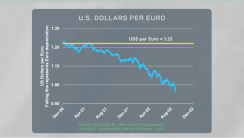
The U.K. faces many problems similar to those in Europe, with the inflation being supply-shock-driven and focused on electricity and natural gas. Unfortunately for the U.K., the inflation pressure is even higher and probably more pervasive than in the rest of Europe. The Bank of England has responded by raising rates – more than the ECB but less than the Fed. At the same time, the U.K. is planning some large tax cuts to help consumers. This fiscal-monetary combination has fed through to a depreciation of the British pound relative to the U.S. dollar.
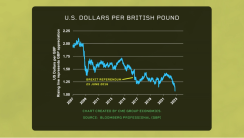
Over in Japan, the country has not yet seen the kind of inflation being observed in the U.S., Europe and the U.K. After decades of deflationary psychology by Japanese consumers, the Bank of Japan is welcoming a bit of inflation and has steadfastly maintained its zero-rate and yield curve control policies. The possible trigger for a shift in BOJ policy might occur depending on the extent of the depreciation of the Japanese yen against the U.S. dollar. Japan is a commodities importer, and commodities are priced in U.S. dollars, so the currency weakness is starting to impact the economy even though the flow-through to consumer prices has been relatively muted so far.
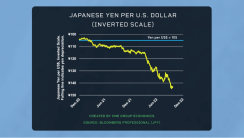
Last but not least is China, which is facing completely different challenges. The COVID-zero policy and various partial shutdowns of cities has greatly depressed consumer demand. At the same time, worsening debt problems in the property sector have also made consumers more reluctant to spend. China is pushing new loans into the economy to stimulate infrastructure construction projects, and the People’s Bank of China has made incremental cuts in interest rates. All these factors have contributed to the depreciation of the yuan against the U.S. dollar.
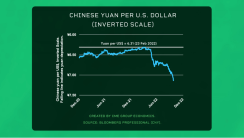
With central banks from the major currencies facing different economic challenges, it is no wonder that policy responses have diverged – which can make for considerable exchange rate volatility.
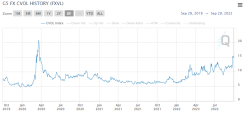
Source: CME Group
Japan and the U.K. face conflicting challenges as well, reflected in different central bank policy paths. FX volatility is not likely to subside any time soon.






